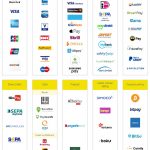If you are new to ecommerce, you might be wondering how to go about internet marketing. In this article, you will learn about the different methods of marketing for ecommerce businesses. This includes search engine optimization, personalization, and ad server. Then, you’ll learn how to set up your marketing plan to reach your business’s goals. Developing a marketing plan is a key part of any ecommerce business, but it’s not the only step to success. You can break it down into smaller tactics to reach your goals.
Creating shoppable content
Brands that are creating shoppable content are doing more than just making product descriptions available for consumers to purchase. Shoppable content can be found in editorial- style formats like blogs, style guides, lookbooks, online magazines, and even social media posts. Shoppable content helps customers reduce the digital touchpoints between the product and the content. By adding a product link to an article, brands can encourage shoppers to purchase the product they are reading.
Personalization
The best eCommerce brands understand how to make online visitors feel special. While most web merchants strive to make web visitors feel like royalty, the more personal interaction will ultimately increase sales and customer loyalty. Personalization in ecommerce can also energize existing customers and boost profitability more effectively than acquiring new ones. In fact, almost 90% of marketers say personalization has helped them grow their business. And what makes it even more effective?
Search engine optimization
When you have an e-commerce website, you should incorporate search engine optimization strategies. Google ranks web pages based on relevance to certain keyword phrases. The algorithms that are used by Google are focused on ensuring that people find what they’re looking for, whether it’s products, services, or information. The more relevant your site is to these keywords, the more visitors and customers your website will attract. By incorporating SEO strategies into your website, you can take advantage of these results.
Ad server
Before shopping for an ad server, it is important to understand your goals and determine which functionality you need most. In an ideal world, the ad server will have all of your business requirements, plus a few nice-to-have features. It should also fit within your budget. Create a wish list of features and capabilities that you require in an ad server, and compare that to the features of the ad server.
Yellow pages
The popularity of the Internet has shifted sales efforts from traditional Yellow Pages advertisements to online marketing. Although the Yellow Pages has existed in its earliest forms for decades, the early 2000s saw a significant shift in public perception. More people are searching for local businesses on their phones and computers than in a physical Yellow Pages. Initially, this looked like the end of the Yellow Pages as a marketing tool, but as it began to lose its dominance, the business quickly began to adapt.
Bid management
Using a bid management software can be a good way to increase your revenue and maximize your marketing campaigns. Typically, bid management software runs on a rules-based algorithm that automatically adjusts your bids based on your parameters. Typically, you start with one or two bid management rules and then expand as your business grows. Some common bid management rules include cost-per-acquisition (the amount you spend to land a sale), cost-per- click, and cost-per-impression.










